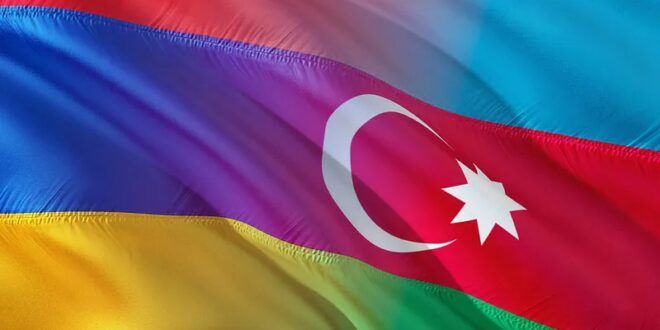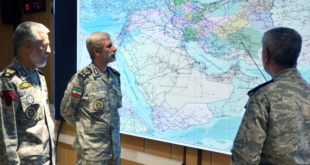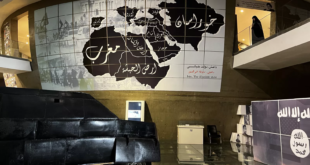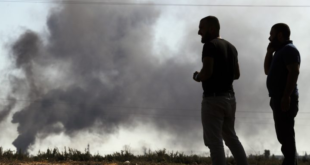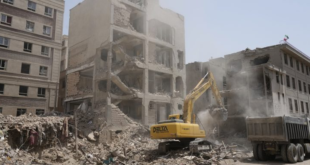The Karabakh conflict and the relationship between Armenia and Azerbaijan are often clouded by misinformation. To address this, it is crucial to highlight some historical facts. Despite claims to the contrary, ethnic Armenians began settling in Karabakh following Russia’s decisive triumph over the Persian Empire in the Russo-Persian Wars of the early nineteenth century. Following the 1828 Treaty of Turkmenchay, Christians from Persia were permitted and invited to relocate to the Russian Empire. It so happens that they were predominantly Armenians. They were settled not only in Karabakh but also in other South Caucasus regions like Javakheti in Georgia.
Since then, the fact of Armenian demography has served the interests of Imperial Russian, then Soviet, and now again Russian Federation influence in the South Caucasus. What took place between ethnic Armenians and the Ottoman Empire during World War I is an understandably emotional subject, yet it is essential to note that Azerbaijanis—although a Turkic people—were never part of the Ottoman Empire. Armenians nevertheless often simply call the Azerbaijanis “Turks,” conflating them with the Anatolian Turks, with whom they have cultural, historical, and even linguistic differences. Some observers see racist overtones in such a willful confusion, particularly given the more-than-scorn with which the term is used.
Recent Background and Questions of “Ethnic Cleansing”
As explained below, Armenians were not ethnically cleansed from Karabakh, despite claims by the Armenian diaspora to the contrary. By their own testimony, they were subject to no violence and chose on their own to leave. However, recent discussions about ethnic cleansing in the region necessitate a look back to 1987–1988. During those years, the conflict between Armenia and Azerbaijan initially erupted, in southern Armenia, even before the First Karabakh War of the early 1990s. It erupted as the Armenians expelled from southern Armenia about 180,000 Azerbaijanis who had resided there for generations, in what is historically the western part of the ancestral lands that they call Zangezur. Much of contemporary Armenia was for centuries under the sway of Azerbaijani khanates before these were absorbed into the Russian Empire.
The events of 1987–1988 were actually the fourth such expulsion of Azerbaijanis by Armenians in the twentieth century. Previous occurrences took place toward the end of Stalin’s rule (late 1940s and early 1950s) under the guise of Soviet administrative law, and also much more violently during the “re-Armenianization” military campaign in the years of the Russian Civil War (1917–1921), as well as during ethnic clashes earlier in the century (1905–1907). Nevertheless, during the Soviet period, the two peoples lived mostly harmoniously together, with innumerable interpersonal friendships, legendary cultural exchange, and significant degrees of intermarriage. This changed dramatically under Gorbachev’s glasnost and perestroika policies, when the opening of the Soviet Union to the world gave the international Armenian diaspora the chance to intervene in domestic Armenian affairs.
What Is the Present Situation?
This diaspora had overtly conserved for nearly a century all the divisive and xenophobic sentiments that were mostly repressed in Armenia proper under the Soviet regime. They supported an assassination campaign against Turkish diplomats in the 1970s and 1980s, and they constituted a main support of Karabakh separatism in the early 1990s and of the Karabakh leaders in power in Yerevan in subsequent years. It was this diaspora that has publicized around the world the false reports of recent ethnic cleansing of Karabakh. The prime minister of Armenia, Nikol Pashinyan, has himself publicly stated that there was no such cleansing and that the recent “antiterrorist operation” by the Azerbaijanis did not involve attacks against Armenian civilians.
To recall, this operation was the final phase of putting an end to the Armenian military occupation of sovereign Azerbaijani territory (this status underscored by four UN Security Resolutions in 1993), which began with the First Karabakh War in the early 1990s. In the fall of 2020, Azerbaijan launched the Second Karabakh War to dislodge those forces, which the European Court of Human Rights had found were not “local self-defense” forces but indeed supplied, managed, and directed from Yerevan, including soldiers and commanders from the main body of Armenia. Armenians who left the area following the recent antiterrorist operation consistently indicated, in interviews with local Armenian media, that they were treated respectfully and chose to leave voluntarily.
A mission of the United Nations to the region found literally no reports of violence against them, and no evidence that civilian objects had been targeted during Baku’s antiterrorist operation. Many Armenians who left shared with their interviewers, after they arrived in Armenia, that it was their own local Armenian authorities who advised—or ordered—them to depart. This would reasonably represent a failed attempt to demonstrate the impossibility of cohabitation. For there are Armenians who stayed—mainly born and raised during the Soviet era—and they were neither harmed nor persecuted, but rather supported by their newly arrived Azerbaijani neighbors and old friends in Baku, as well as by the government.
A significant factor in the prolonged unresolved conflict is the residual control exerted by Karabakh leaders, Robert Kocharyan (President of Armenia, 1998–2008) and Serzh Sargsyan (President of Armenia, 2008–2018), over the Armenian state apparatus. These Karabakhi leaders kept the Armenian population in poverty, enriching themselves and their associates. Pashinyan, who has been active in Armenian politics for over 25 years, rose to power in 2018 through popular street protests, opposing the long-standing rule of the Karabakh leaders. However, his leadership has been inconsistent, often swaying with political pressures from revenge-seeking forces within Armenia and the influential diaspora.
What Does the Future Hold?
Pashinyan has lately been going in all directions all at once, issuing one statement looking for peace in the morning followed by a bellicose one in the afternoon and an anodyne waffle in the evening. This seems to be a survival-habit learned from the whole of his political career, which in the past has been nevertheless marked by political courage and tactical, even sometimes strategic, intelligence. Now, however, he would seem to lack a unique foreign-policy strategy. He gives the impression, indeed, of having several different general visions that are not necessarily compatible, and all of which he pursues at the same time. This would explain why his short-term tactical moves have never, in the past five years, appeared to be integrated into a long-term plan.
Georgia’s Mikhael Saakashvili—who was president when Russia invaded his country in 2008 and is now imprisoned under the Russian-oriented government that subsequently took power in Tbilisi—has publicly advised Pashinyan to stop vacillating and equivocating. Pashinyan, Saakashvili says, needs to seize the opportunity while Putin is concerned with Ukraine and distracted. But can Pashinyan succeed? Russian state companies own the Armenian natural-gas distribution system as well as the Armenian state railroads company, and they are very highly influential in the banking system. Russia operates the Metsamor nuclear-power electricity-generating plant, and the Border Guard Service of Russia’s FSB provides security for nearly all of Armenia’s international frontiers.
This litany does not even mention the Russian military base at Gyumri with 3,000 soldiers and another air base with a squadron of attack helicopters at Erebuni Airport five miles from central Yerevan. Yet the signature of a peace treaty with Azerbaijan would, at a minimum, open the way for badly-needed fundamental changes in Armenia’s domestic and foreign policy. But can Pashinyan really withdraw from the Russian-led Commonwealth of Independent States, Collective Security Treaty Organization, and Eurasian Economic Union? Even if he can, still he is in no position yet to submit applications to the EU and NATO, as Saakashvili would have him do, since these organizations have their own rules and standards for even considering third parties to be members.
However, Azerbaijan, Georgia, and Turkey are all ready to offer him support, like they have been since the late 2000s, when the Karabakh clique led by Kocharyan and Sargsyan refused it. Pashinyan, if he continues to trying to sit on two stools at the same time (Russia and the West), risks falling between them as the distance between them relentlessly increases. The first, absolutely necessary step is to sign a comprehensive peace treaty with Azerbaijan before the end of the year. Without this facilitating condition, nothing else is possible.
 Eurasia Press & News
Eurasia Press & News
